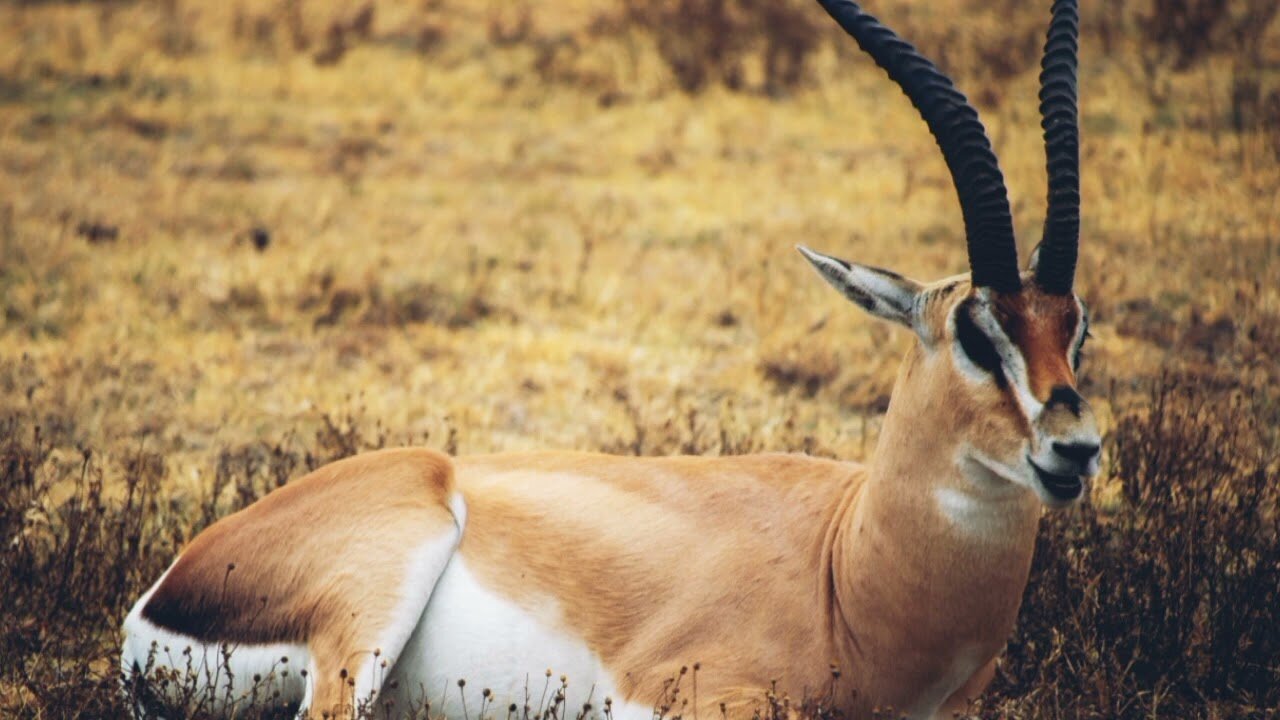Premium Only Content

Interesting facts about grant's gazelle by weird square
#pet #animal : The most, new, latest, shocking, weird, scary, funny, fascinating, interesting and amazing things | facts in the world.
The Grant's gazelle is a species of gazelle distributed from northern Tanzania to South Sudan and Ethiopia, and from the Kenyan coast to Lake Victoria. Its Swahili name is Swala Granti. It was named for a 19th-century Scottish explorer, Lt Col Grant.
Grant's gazelle is more genetically related to Soemmerring's gazelle (N. soemmerringii) and Thomson's gazelle (Eudorcas thomsonii) with Soemmering’s gazelle being the closest relative of the two species. Grant's gazelle shows high genetic variation among its populations, though there is no geographic isolation. The differentiation of the species may have evolved during repeated expansion and contraction of arid habitats during the late Pleistocene era in which populations were possibly isolated. Grant's gazelle was formerly considered a member of the genus Gazella within the subgenus Nanger before Nanger was elevated to genus status.
The Grant's gazelle stands 75–95 cm (30–37 in) at the shoulder. The females weigh from 35 to 50 kg (77 to 110 lb) and males from 50 to 80 kg (110 to 180 lb). Its coat is a beige orange on the back with a white belly. The Grant's gazelle looks similar to a Thomson's gazelle, except it is much larger and has lyre-shaped horns which are stout at the base, clearly ringed, and measuring 45–81 cm (18–32 in) long. The subspecies are segregated by different morphological characters, such as horn shape and slight differences in coat colour. These differences are not indicative of ecological separation as with some species. Grant's gazelles are extremely fast; they can run 80 km/h (50 mph), but larger males do not exceed 72 km/h (45 mph)Grant’s gazelles are generally mixed feeders that both browse and graze. Their average diet consists of 65.8% browse and 34.3% graze. Rainfall in their habitats seems to be the determinant of their diets. The Grant's gazelle's diet may also be responsible for the slow growth rates in the browsed plots. They get most of their moisture from the plants they eat, so they do not often have to drink water. Thus they can stay on the plains long after the rains end. From July to September, gazelles move deep into dense brush and wait for the next rains. They will eat red oats and small, tough plants, which are avoided by the other ungulates. This allows the gazelles to survive in the brush during the dry season. Grant’s gazelles eat mainly dicotyledons during the dry season and grass in the wet season. Animal planet | Discovery | Netflix | Documentary | Animal World
| BBC Earth | NatGeoWild | Brave wilderness | The Dodo| Animal Aid Unlimited | Animal Planet | Real Wild | iPanda | Hope for Paws | Kruger Sightings | Discovery #animals
-
 59:09
59:09
Candace Show Podcast
4 hours agoBecoming Brigitte: Who Created Emmanuel Jean-Michel Macron? | Ep 5
57.4K34 -
 1:08:03
1:08:03
Kimberly Guilfoyle
5 hours agoLIVE COVERAGE TRUMP-MODI MEETING | Ep.196
57.2K11 -
 1:26:45
1:26:45
Redacted News
3 hours agoPANIC in Germany: Scholz RAGES as Trump & Putin Push Ukraine Peace Deal, RFK CONFIRMED | Redacted
106K127 -
 LIVE
LIVE
Quite Frankly
5 hours ago"RFK's Moment, Gold Rush, Wendy Williams Shocker, MORE!" ft. Tony Arterburn, Lauren Conlin 2/13/25
103 watching -
 UPCOMING
UPCOMING
Common Threads
1 hour agoLIVE DEBATE: Time to Delete Entire Agencies?
3 -
 LIVE
LIVE
theDaily302
10 hours agoThe Daily 302 - Colonel Roxane Towner Watkins
73 watching -
 1:02:24
1:02:24
In The Litter Box w/ Jewels & Catturd
1 day agoGULF OF AMERICA | In the Litter Box w/ Jewels & Catturd – Ep. 741 – 2/13/2025
66.4K46 -
 2:02:16
2:02:16
Revenge of the Cis
3 hours agoEpisode 1446: Repent Fatty
32.3K4 -
 1:51:44
1:51:44
The Quartering
7 hours agoPam Bondi SUES New York, Elon Musk's Baby Mama Drama, and Trump Buyouts Continues
103K46 -
 4:59
4:59
CryptoWrld
1 day agoTrump Family Bets Big On Bitcoin: What Does This Mean For You?
43.7K1